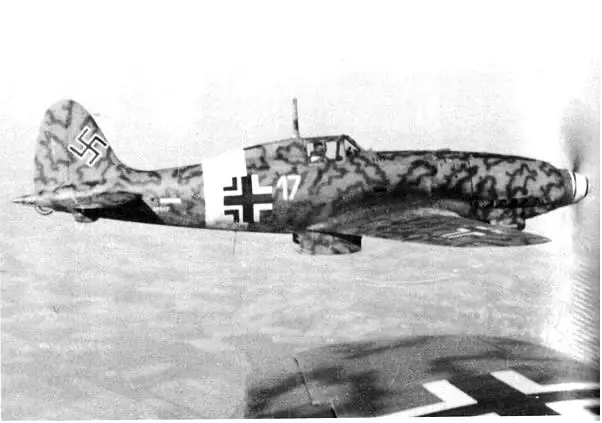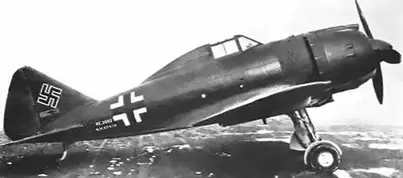
The German Luftwaffe made use of a small fraction of Italian aircraft during WW2, here is the story of those types and their operational use
In a previous article, I talked about how the Italian air force (Regia Aeronautica), used different types of German-built aircraft during the second world war. This should not be a surprise, as Germany was the major industrial economy in the Axis pact and its production capabilities went far beyond those of Italy, which could not reach a large-scale aircraft production, required for the war needs.
It is also true that the German Luftwaffe also made use of- some Italian-built aircraft during the war, mainly captured ones, following the armistice of September 1943, between Italy and the Allies. Another source of Italian-built aircraft were the industries located in northern Italy, occupied by the Germans until the end of the war. Industrial plants like Fiat, Macchi, Reggiane, SIA, and Caproni kept on their tiny production under German occupation and supplied aircraft to the ranks of the National Republican Air Force (ANR) and of the Luftwaffe.
Aftermath of the armistice
When the radio broadcast given by Marshall Badoglio, on the evening of the 8th of September 1943, announced the armistice between Italy and the Allies, a new tragedy had just begun. The armed forces were left with scarce orders and were not prepared in advance for this situation. For what concerns the Regia Aeronautica, the plan, was to concentrate all remaining fighter squadrons on the airfields around Rome, while bombers and recognizance aircraft had to converge on Sardinia. Control of airfields had to be maintained and German personnel had to be neutralized.
On the other side, the Germans were prepared for this new scenario since July and easily overrun Italian forces in several locations, capturing airplanes and personnel. This quick reaction meant that in the space of a few days, the Germans had established control over northern and central Italy, while in the south a new battle began with the allied landings in Salerno and Taranto.
In this phase, the German forces captured several hundred Italian aircraft, both in operational and non-operational conditions.
Reggiane Re.2002
The sources report that between 60 and 100 Reggiane Re. 2002 were captured. This aircraft was a good fighter bomber that the Regia Aeronautica had used for ground attacks and anti-ship operations. The Germans utilized such planes for training duties but also for anti-partisan missions in France. Today, the fuselage of an Re.2002 shot down by the French partisans is on display at Musée de la Résistance in the city of Limoges.
The Germans also commissioned the production of around 250 new fighter bombers to the Reggiane factory, but it is not clear how many were finally delivered. The destruction of the main Reggiane plant in January 1944 reduced greatly the overall production.

Re.2002 with Luftwaffe markings
Savoia Marchetti S.M.82 “Marsupiale”
The S.M. 82 saw active service with the Regia Aeronautica as a long-range bomber but, most importantly, as a transport aircraft. The Germans captured a certain number of S.M 82 (a few dozen probably) but most importantly, kept the production of this aircraft alive at the SIAI-Marchetti factory in northern Italy. The production numbers are also unclear but likely between 200 and 300 aircraft were built between September 1943 and early 1945. We know that three transport Gruppen used the S.M.82 and one of them participated in the Airbridge to Crimea in 1944.

S.M. 82 serving with the Luftwaffe
Piaggio P.108
The only four-engine bomber developed by Italy was built in a few numbers (24) and only a nine P.108 of the B (bomber) version were still available in September 1943, eight were sabotaged and one flew to the south. Piaggio had commenced the production of a civilian (C) and transport (T) version. The Germans seized the few available aircraft and acquired 7 additional P.108T and a similar number of the C type. These aircraft were used by the Luftwaffe as military cargo and took part, in the Crimean air bridge in 1944. None of them survived the war.

Piaggio P.108T with Luftwaffe markings
The last fighters
The last generation of modern Italian fighters produced during the war was made up of three different machines, the Fiat G.55, the Macchi M.C.205, and the Reggiane Re.2005. The Regia Aeronautica chose to start the production of all three types, but they were available in few numbers by the time of the armistice.
A total of 26 M.C.205 were captured and filled the ranks of the II Gruppe of the Jagdgeschwader 77 and flew with Luftwaffe markings for some months. In December, the short experience of the Luftwaffe M.C.205 came to an end. The aircraft were in fact handed over to the Italian pilots of the ANR while the JG77 acquired new versions of the Bf1 09.

M.C. 205 with Luftwaffe markings
Around a dozen of Reggiane Re.2005 experienced a similar fate, captured by the Germans and later transferred to the ANR. However, since the post-armistice production had ceased, these fighters saw no use in the frontline squadrons of the ANR.

Re.2005 with Luftwaffe markings
The few Fiat G.55 built before the armistice were initially requisitioned by the Germans, but soon were handed over to the ANR. The production continued for most of 1944 and these aircraft formed the bulk of the ANR squadrons.
Fiat C.R. 42
Incredibly enough, in late 1943 ,the Germans commissioned the construction of 200 CR.42 biplanes to the FIAT factory. These aircraft were to be used as bombers for anti-partisan operations. 73 aircraft were effectively built and transferred to the Luftwaffe, equipping the Nachtschlachtgruppe 9 (Night assault group) that operated in Yugoslavia and central Italy.
Sources
Valdonio, G.C., Frecce, Saette, Folgori e Veltri; storia critica dei caccia italiani della Seconda guerra mondiale, (2022)
Brotzu, E., Caso, M., Cosolo, C., Aerei italiani della seconda guerra mondiale: bombardieri n.6, (1973).
Sgarlato, N., La regia aeronautica nella seconda guerra mondiale (2000).